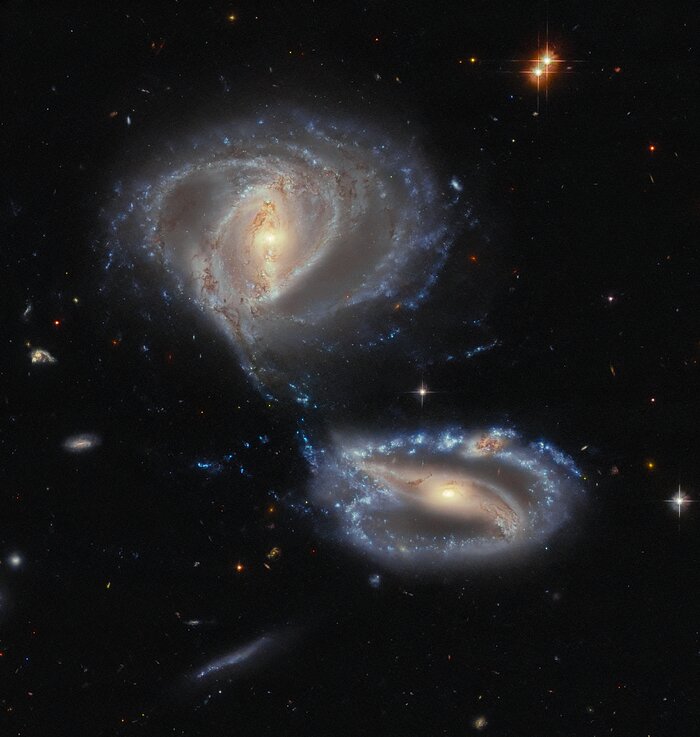Hubble snaps a trio of interacting galaxies nearly 500 million light-years from Earth

Two spiral galaxies, each glowing brightly in the centre, are featured in this latest picture from the NASA/ESA Hubble Space Telescope. The interacting galaxy pair known as Arp-Madore 2339-661 is located roughly 500 million light-years from Earth in the constellation Tucana.
The two clearly defined spiral galaxies are NGC 7733 in the lower right and NGC 7734 in the upper left. Interestingly, this picture contains one more galaxy - named NGC 7733N - if you look carefully at the upper arm of NGC 7733.
According to ESA's post, the three galaxies are interacting gravitationally with one another and are sometimes referred to as a 'merging group', which means they are on a course to ultimately become a single entity.
2⃣✖️🌀 or 3⃣✖️🌀❓Despite what first meets the eye in our ESA/Hubble Picture of the Week, the interacting galaxy pair known as Arp-Madore 2339-661 has three members. Did you spot the third galaxy? 🤔 1/3 pic.twitter.com/8uAbR5z5QB
— HUBBLE (@HUBBLE_space) October 23, 2023
Launched in 1990, the Hubble Space Telescope orbits Earth and sends high-resolution images and data from the universe. It has greatly expanded our understanding of astronomy by observing distant galaxies, and other celestial objects.
The premium observatory operates in the visible, ultraviolet, and near-infrared spectrum, allowing it to peer into the depths of space with unprecedented clarity. Hubble has been crucial in advancing our knowledge of the cosmos and continues to be a valuable tool for scientific research.
- READ MORE ON:
- Hubble Space Telescope
- interacting galaxies










